The tree musketeers

Russell Robertson vaults over a tree during a tree-planting shift. Tree planting has been described as “a combination between industrial labour and extreme sports”

Russell Robertson vaults over a tree during a tree-planting shift. Tree planting has been described as “a combination between industrial labour and
extreme sports”
An estimated 90 percent of Canadians live within 100 miles of the border with the US. Up in the sparsely populated wildernesses of the north, meanwhile, logging companies work 24/7 to fell trees for lumber, leaving behind ‘cut blocks’ – bleak fields of stumps, mulch, roots and detritus covering thousands of hectares. Following in their wake come hordes of seasonal tree planters, who drive for miles up dangerous roads to enter these remote areas. Staying in basic bush camps, off the grid and armed only with shovels and bags of saplings, they set about creating new forests from scratch. Rita Leistner, a Canadian war photographer and former tree planter, spent the summers from 2016 to 2019 shooting photos and recording interviews for a film with one motley, transient group of 100 planters at a camp in British Columbia. Their work is exceptionally tough.
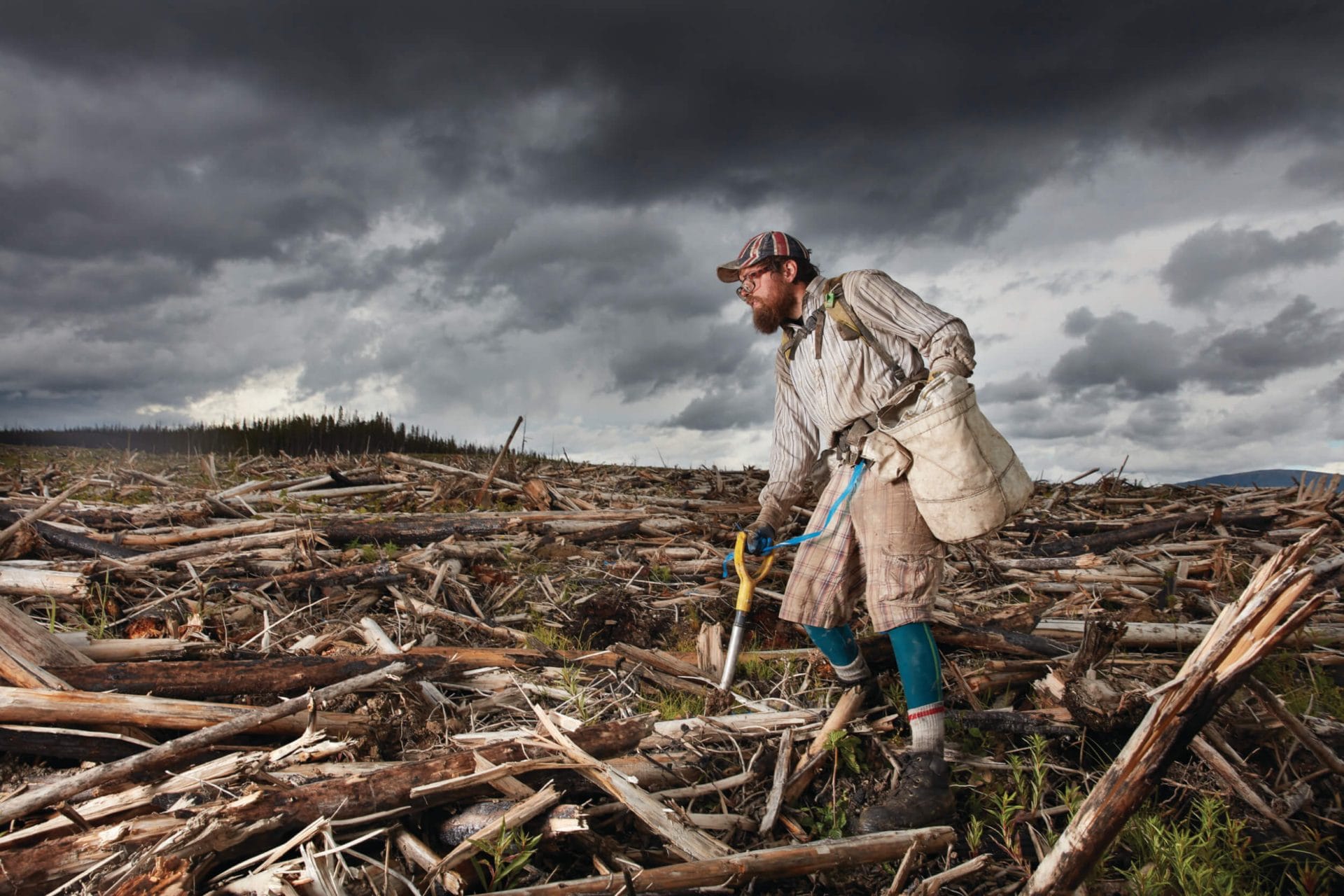
Sandy Miller
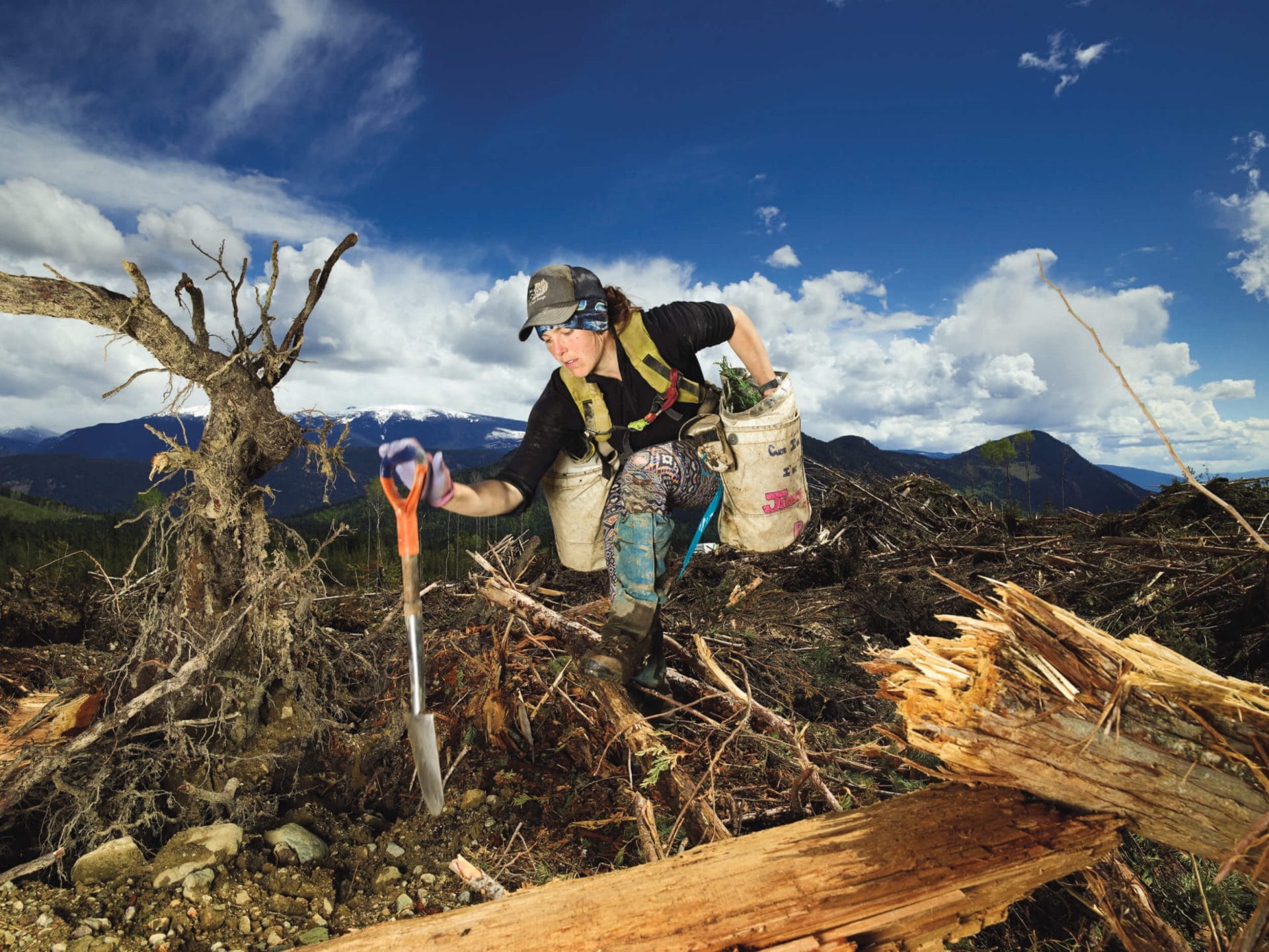
Jennifer Veitch
“I planted for ten years in the ’80s, and then I went on to become a conflict photographer in Iraq and Afghanistan, and people would ask me what prepared me for taking photos in a warzone. When I said, ‘Tree planting in Canada,’ people were surprised,” says Leistner. “I don’t think I am ever able to explain quite how gruelling it is. I walked through the mountains into Iraq in 2003 and I still think tree planting is one of the hardest things I ever did.”
“The work is so physically difficult that few people over the age of 30 are capable of doing it with enough strength and speed to make enough money,” she continues. “Because you can’t just go and wander around and make an OK wage. You have to be out there performing like a world-class athlete. You have to slam your shovel in the ground until you find a spot where you can plant a tree, bend down and open the hole with your shovel, put a tree in and close it with your hand or with your heel. You‘re doing that thousands of times a day. It’s just you, your planting bags, your shovel and your legs for eight hours at a time. You’re carrying upwards of 30 pounds (13kg) of seedlings until you empty your bags, and you’re climbing mountains.”
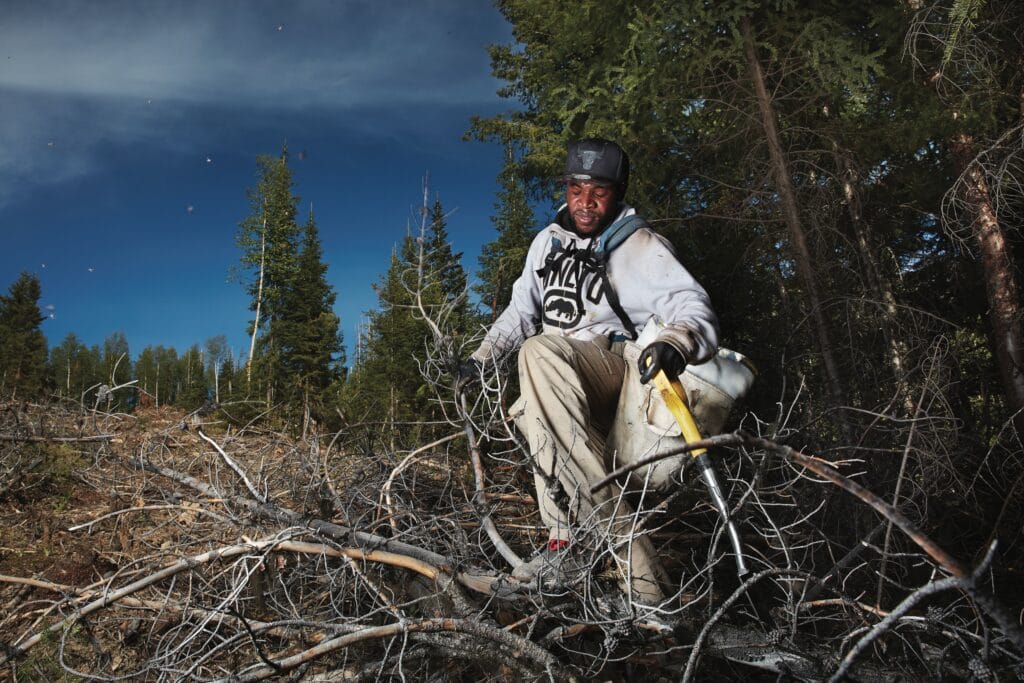
Jose Kaze, one of the ‘high ballers’ who set records for planting
There are grizzly bears and cougars in the forests, and planters have to contend with endless bites from swarms of bugs. To make minimum wage, they need to plant at least 2,000 trees a day: the best planters can do more than 5,000. A biochemist who used to work in nutrition for the Canadian Olympic team carried out a study which estimated that tree planters burn around 8,000 calories a day. “I asked her to give me a way of describing that, that people can relate to,” says Leistner. “She said, ‘It’s like running two-and-a-half marathons every day.’ The camp cooks say that tree planters eat three times what a normal person eats, and still lose lots of weight.”
Leistner’s unposed portraits of tree climbers catch them in heroic stances in the middle of their work. She received criticism for photos she took of US soldiers in Iraq in the noughties, for portraying them as young and vulnerable: these tree planters, by contrast, appear fearless and invincible. Leistner sees them as the inheritors of the previously idealised status of lumberjacks in Canada, one which she says has been destroyed by mechanisation. “There were songs and poems and this whole mythology and romance around logging,” she says. “It used to be that your great-grandfather was a logger, your grandfather was a logger, it ran in the family, and that’s happening less; there are way fewer jobs because the machines they have now can do the work of a hundred men. Loggers would tell me, ‘Back in the day I played my violin and we had this community and social life, and now we work 24/7 because the machines don’t have to sleep.’ So they do shift work and they work at night, and that whole social part is gone.” This is where tree planters – with their toughness, their camaraderie and their community – step in to fill a gap in the Canadian psyche. “It’s man against the land,” says Leistner.
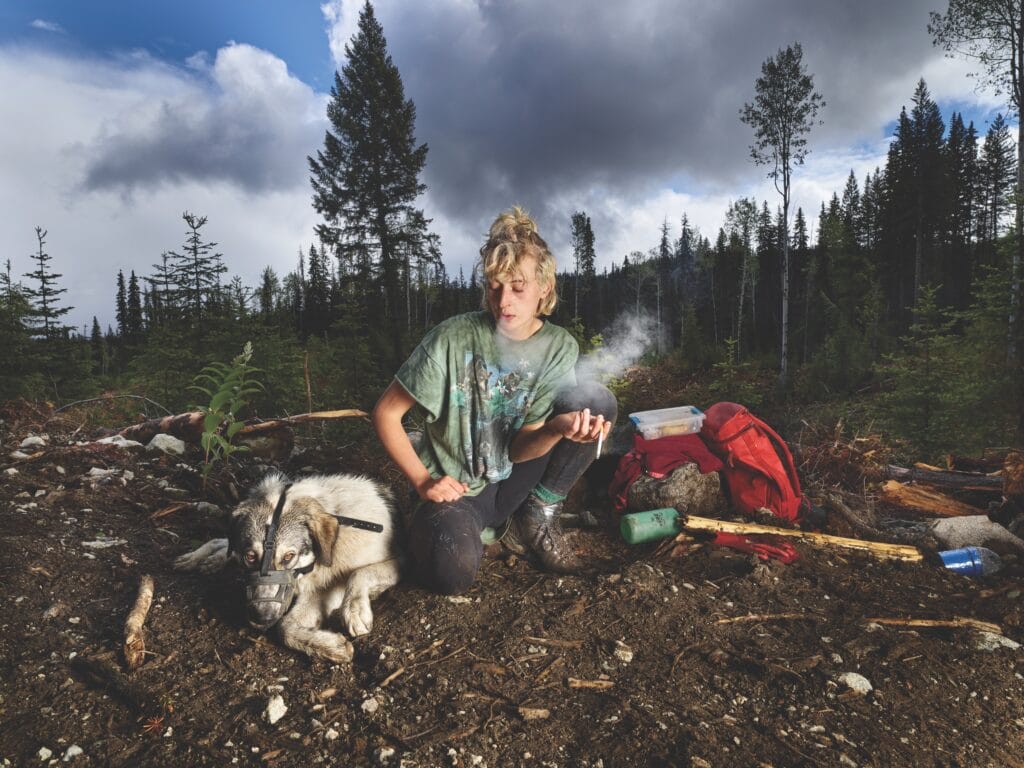
Dagny takes a break with her dog, Carson
When tree planters enter a new cut block on their own, they mark out an area to work in. Depending on the challenge of the terrain, they will receive between 11 and 28 cents per tree planted, noting their production in ‘tally books’. They have developed their own language to describe their workplace: good land is ‘cream’; tough land is ‘schwack’, ‘slash’, ‘schnarb’ (featuring big piles of sticks and brush) or ‘duffy’ (needles and poor soil). ‘Screefing’ is kicking away dirt and dust to get to the soil; the ‘cache’ is the base where they go to replenish their bag of saplings, a ‘cache bash’ is when they take a break for a moment’s relaxation and maybe a cigarette (known by planters as a ‘dart’); and a ‘high baller’ is the day’s most prolific planter.
Shovels are venerated. “They look like garden tools, but they’re not,” a planter called Paddy told Rita. “They’re weapons, toys, moneymakers.” Many planters have shovels tattooed on their arms, alongside elaborate treescapes. “It’s heroicising tree planting but it‘s also heroicising labour, and the value of community and manual labour to the human psyche,” says Leistner.

Megan Webster’s treescape tattoo

Max Patzel and Evan Bull relax at camp after a day’s planting
Injuries become badges of honour, shown off at the raucous parties that take place back at camp at night. Camp nurse Katie told Leistner about patching up the planters. “It’s a lot of physio taping and a lot of open wounds… It gets pretty nasty,” she said. “Tree planters are definitely a special, resilient, gritty bunch of people… [Tree planting] is like a combination between industrial labour and extreme sports.”
When Leistner began planting in the ’80s, she was the only woman in a crew of 12 men. “Sexism followed me through tree planting that whole decade. I had to fight like crazy to get a job as a foreman; I would train guys in how to plant trees and the next year they would be my boss,” she says. “First we were told, ‘Women can’t plant.’ And then, well, that wasn’t true because the numbers are the numbers, but they could say, ‘Women can’t be in management.’”
Nowadays half of the planters are women and many find the planting camps to be much more meritocratic places than the rest of society. One female planter, Janeil, told Rita that “There are so many powerful women here that just do it, they rock it and high ball and no one can argue with that; you can’t take that away from us… You’ll go to a lot of places in the real world and they’ll say, ‘Oh she was only given an opportunity because she’s a woman’ but here women excel and we’re everywhere: we’re in management, we’re planters, we’re deliverers, we’re checkers…it’s ours.”

Taviana MacLeod in a ‘cut block’ in British Columbia
Not everyone sees planters in a positive light, however. While some planting takes place as part of a drive to combat climate change, many of the commissions and most of the funds for replanting come from logging companies, who are required by law to regrow the areas they cut down. “Planters are stuck between logging communities who see them as hippies and interlopers coming from the south, and environmentalists who see them as tools for the logging industry, as cogs in the logging wheel,” says Leistner.
However, she believes these relationships aren’t set in stone. “Tree planting is only in its second generation, whereas logging is as old as when the first ships came to North America,” she says. “So there’s this pressure on reforestation to be as evolved as something that’s been around for hundreds and hundreds of years. It will change with time.”
Many planters arrive as students looking to make some extra cash during university holidays and leave as committed environmentalists, having formed a powerful bond with the land. “No-one knows cut blocks [razed former forests] better than tree planters,” says Leistner. Some have even started to train recruits at new planting companies in Australia.
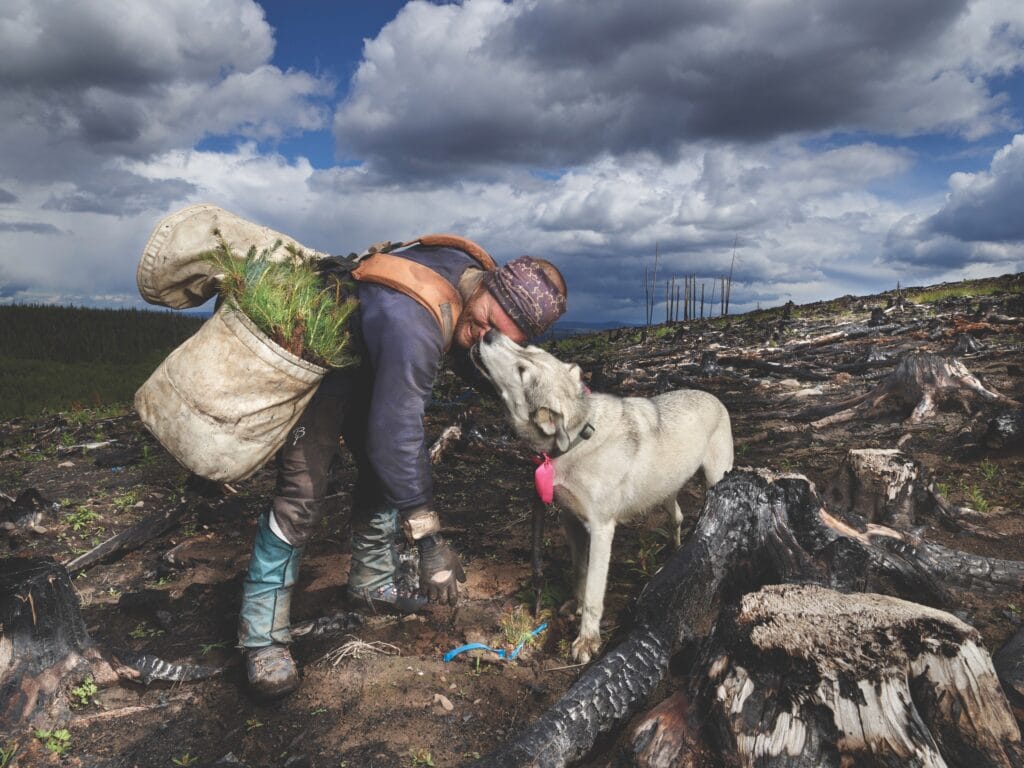
Evan Bull planting a burn site with his dog, Ernest
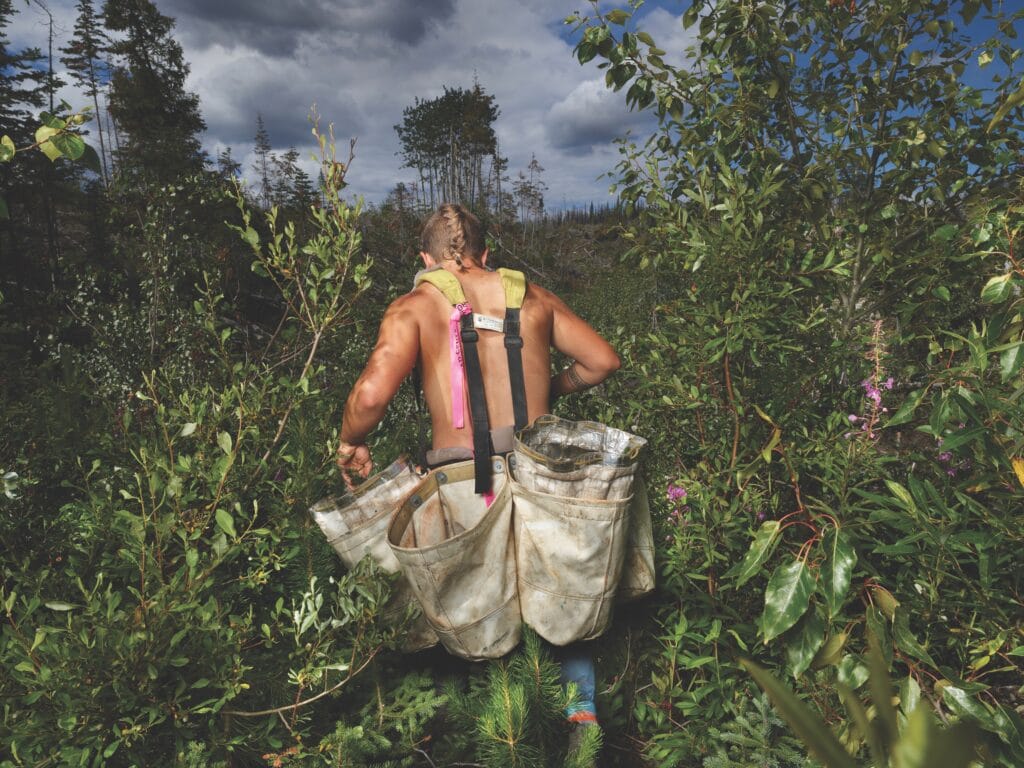
Campbell MacKenzie
Across the world, tree planting is increasingly being seen by governments as a key way of sequestering carbon dioxide and moving towards a net-zero world. In September 2019, after a meeting with Greta Thunberg, Canadian prime minister Justin Trudeau committed his country to planting two billion trees over the next ten years, above and beyond those being planted to replace forests felled by loggers, in order to help in the fight against climate change. If it happens – and after a slow start there is scepticism from some critics that it will – it would mean a boom time for planters.
If they do begin planting the two billion extra trees, however, their efforts may be put in jeopardy by the wildfires that have become an increasingly regular occurrence in Canada. Some are now designated ‘zombie fires’, which never properly go out, but just smoulder over winter before springing back to life in summer.
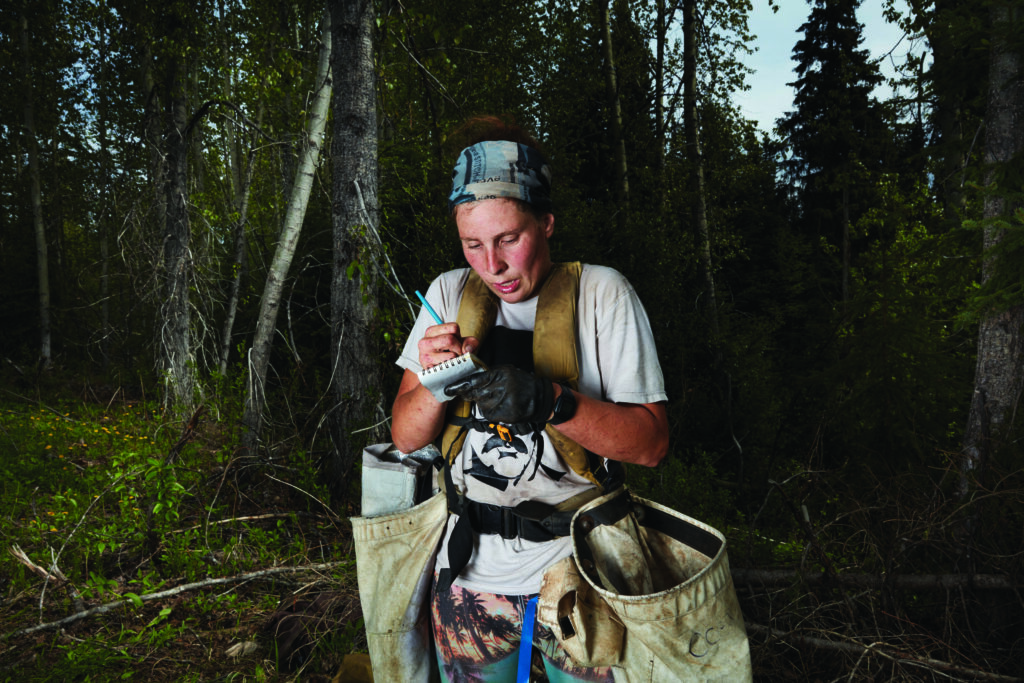
Tree planter Oceanne notes down the morning’s planting total in a tally book
Leistner and her crew had to deal with fires in the 1980s, and she confronted them again when she returned to the forests armed with her camera. “In 2017 we were evacuated because of fires,” she says. “We had gone out in the morning and then there was so much smoke in the air that we were choking on it, and we got the word to leave. We got back to camp, tore everything down at lightning speed and then convoyed it out of the bush with the fire on our tails. I remember driving by a hillside that the people I was with had planted two years before and it was in flames. They were just saying, ‘That‘s all that work, up in smoke.’”
Despite setbacks like this, the main sentiment expressed by the planters Leistner interviewed is one of positivity: for the work, for the community, for the land. During her time shooting the group, they planted 45 million trees over 26,000 hectares, equivalent to 48,000 American football pitches. They are optimistic about their legacies. As one tree planter, Tara, told Leistner, “You can’t plant a tree without believing in the future, without believing there’s going to be time for the tree
to grow.”
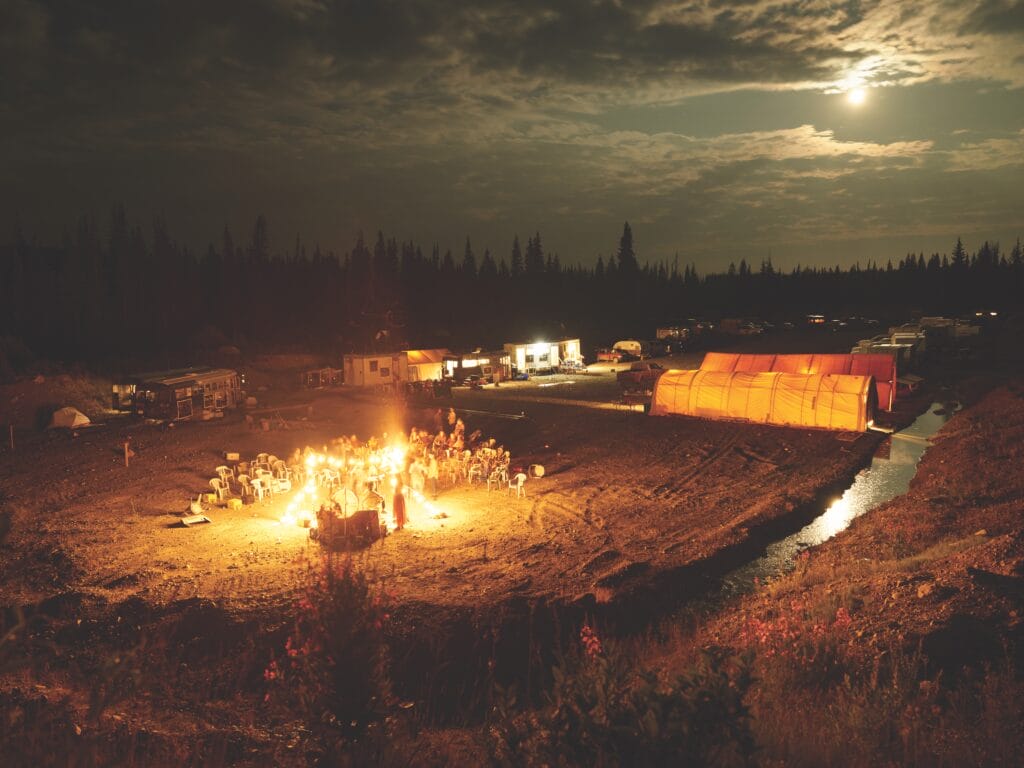
The planters end the day round the fire at the remote camp in British Columbia
Rita Leistner’s book about tree planters, Forest for the Trees, is published by Dewi Lewis. Her work is represented by the Stephen Bulger Gallery.
Slow Journalism in your inbox, plus infographics, offers and more: sign up for the free DG newsletter. Sign me up
Thanks for signing up.





